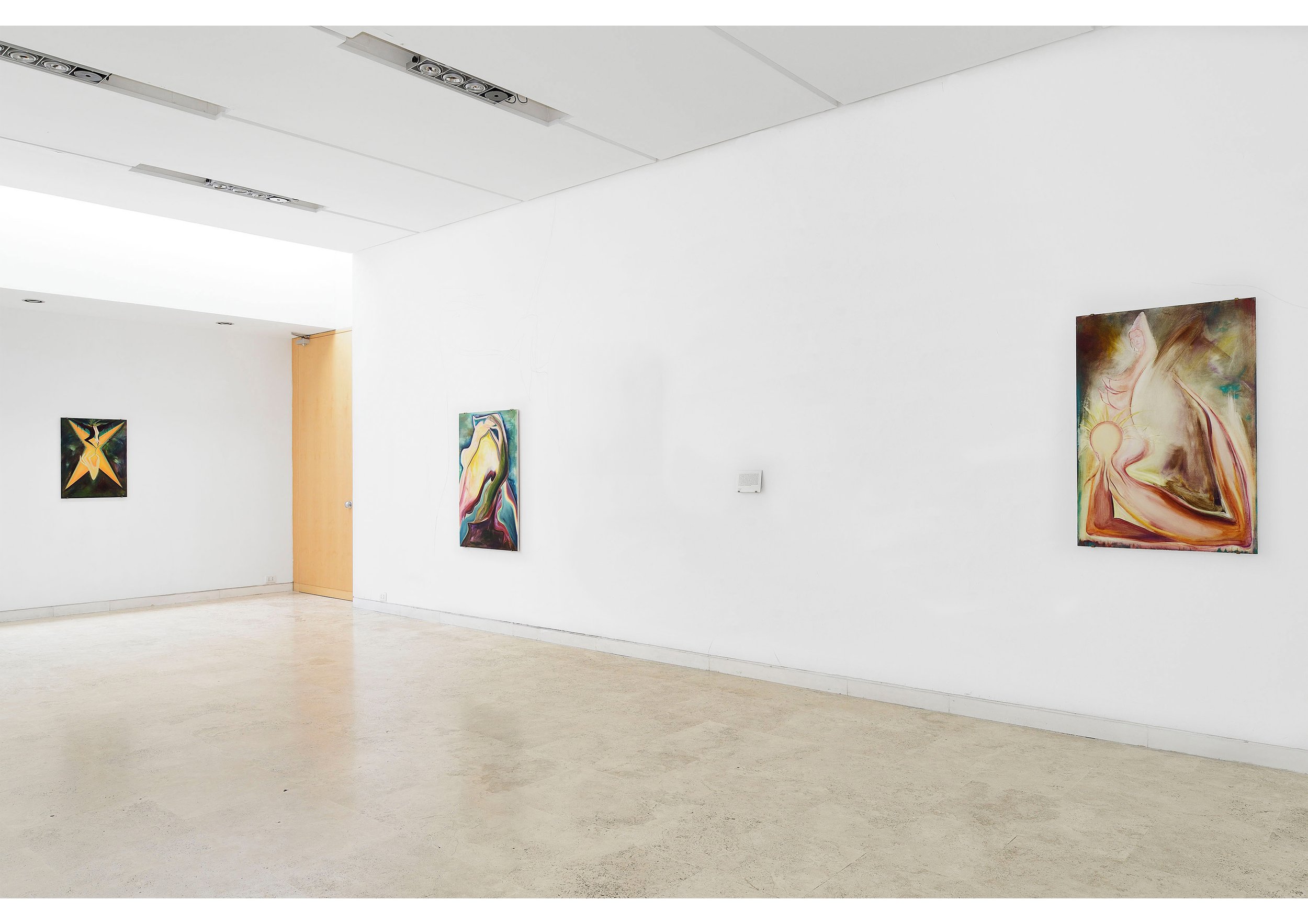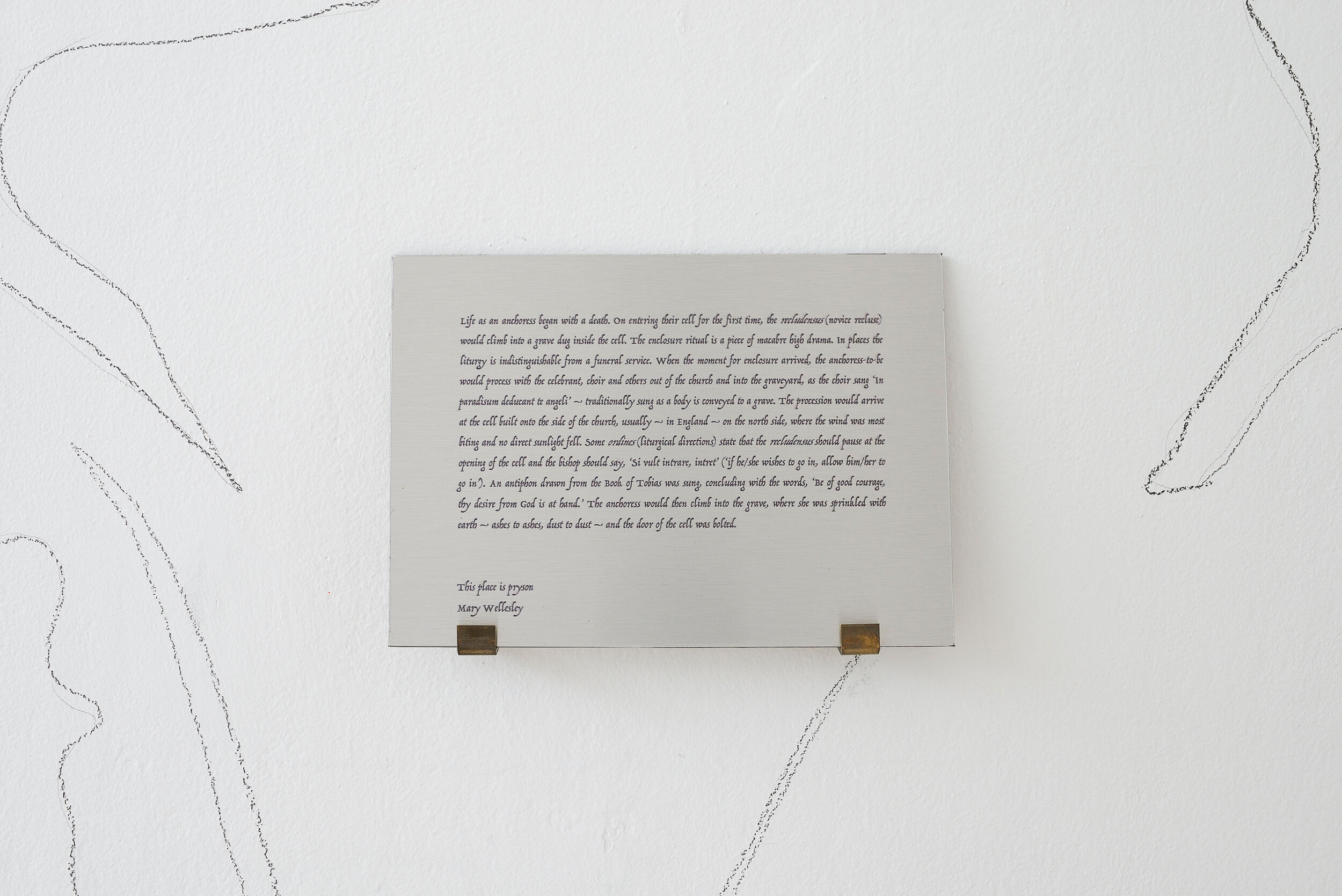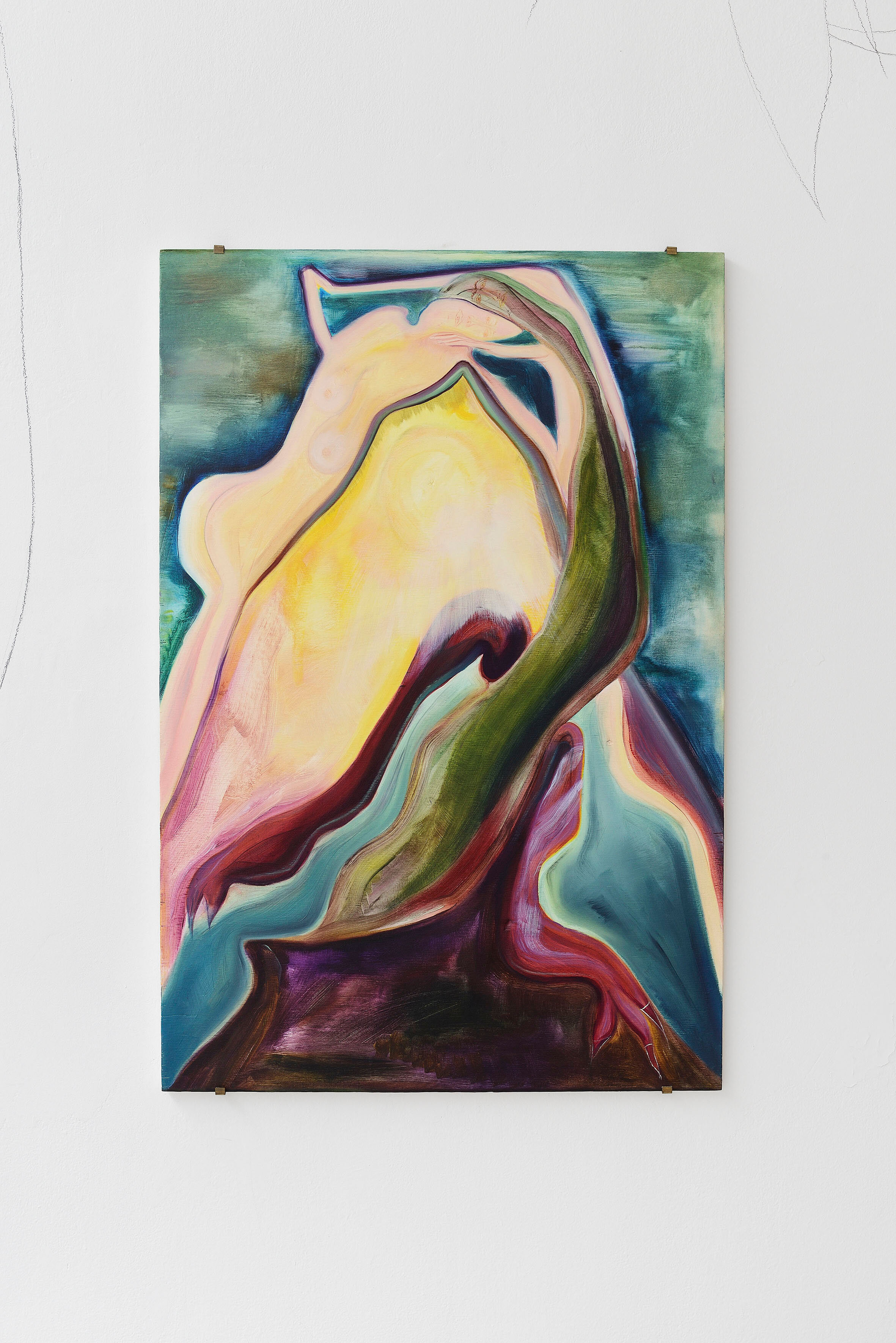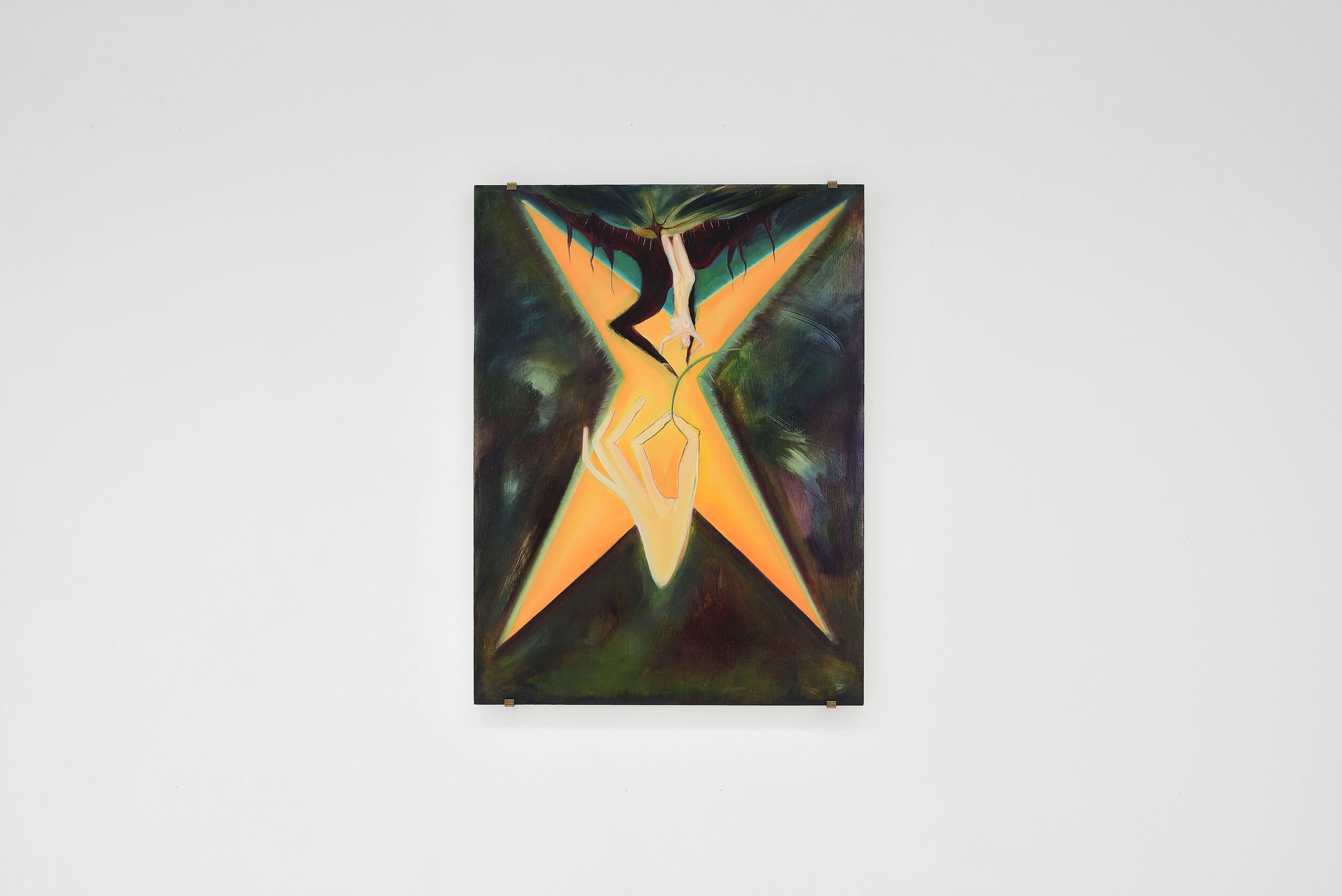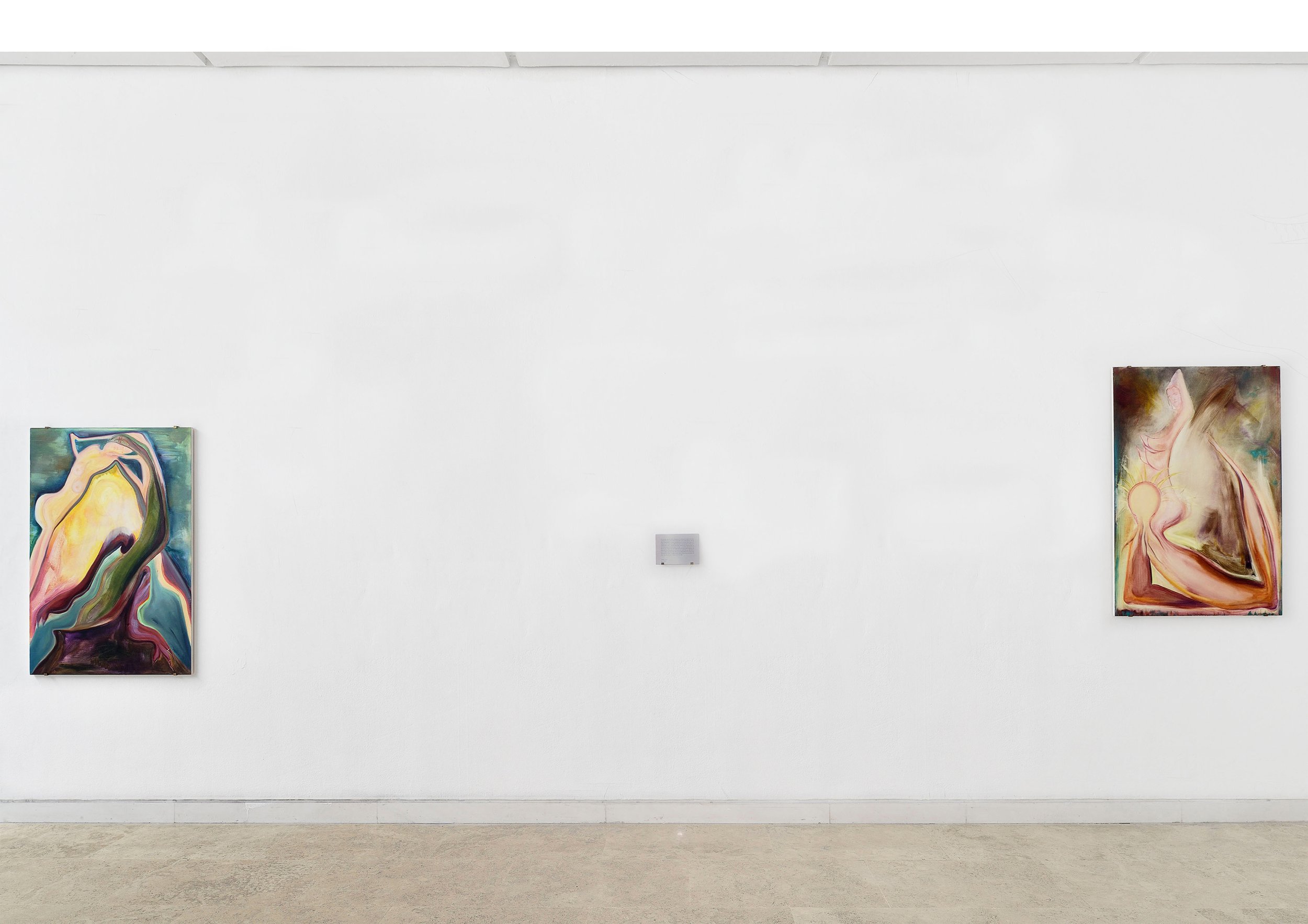Via Con Te
British School at Rome
04-06/2021
Press
https://abbey.org.uk/the-british-school-at-rome
Interview with Marta Pellerini
https://bsr.ac.uk/meet-the-artists-eleni-odysseos/
Press release
June Mostra, British School at Rome, 2021.
During her Abbey Awards fellowship at the British School at Rome, Odysseos drew inspiration from Anthi Andronikou’s article on visual similarities in twelfth-century medieval ecclesiastical paintings found in Cyprus, Puglia, and Jerusalem.
These paintings use identical symbols, patterns, and colours to convey different narratives and address dissimilar audiences and dogmas. According to the linguistic theory of signs, abstracting a symbol’s meaning renders it “arbitrary.” This abstraction underpins Odysseos’ interest in symbolism, extending to how symbols are used by political systems, cults, and religions over time and space to enforce ideologies. In this body of work produced in Rome, the artist constructs her own symbolic lexicon, enriched with references across different eras from the Mediterranean.
The visual similarities in the twelfth century icons were not coincidental but evidence of collaboration and a nomadic lifestyle where artists borrowed from and worked with each other, as Cyprus transformed into an artistic hub in the twelfth century for artists travelling from Italy to Jerusalem. Odysseos perceives these visual similarities as relics of artistic and cross-cultural encounters, as tokens of interconnectedness across time and space.
Another reason for these visual similarities is the story of a group of nuns, organized by Queen Alice of Champagne, who relocated from Acre to Cyprus in the 13th century and possibly commissioned artists during that period. The surviving icons speak to the power of female collectivity, a subject the artist frequently returns to in her work, resonating autobiographically with her own experience of growing up in the tight sisterhood of her grandmother’s six resilient sisters.
Inspired by this collective of nuns, Odysseos presented alongside the paintings a fragment from Mary Wellesley’s This Place is Pryson which describes the medieval ritual of an anchoress entering her cell akin to a funeral procession, where women abandoned their lives to reside in tiny cells until death. Wellesley’s description opened new conversations in Odysseos’s practice, exploring themes of sacrifice embedded in the female experience, social structures, class, spirituality, power structures and hierarchies of discipline and control.
The fellowship was supported by the Abbey Council and the Cultural Services of the Deputy Ministry of Culture of Cyprus
